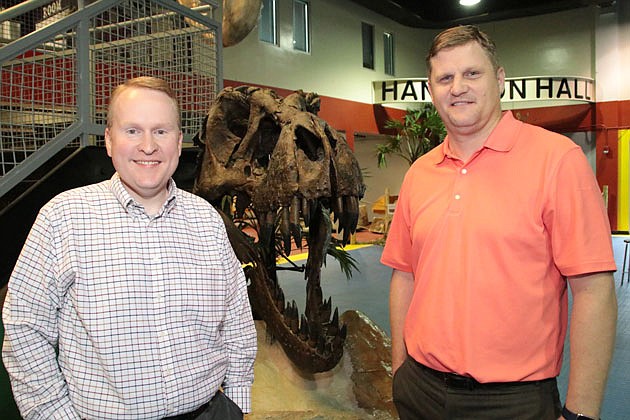- November 24, 2024
-
-
Loading

Loading

Two is not always better than one.
So goes the thinking behind the recent consolidation of the Imaginarium Science Center and the History Museum of Southwest Florida. Supporters of both entities say the merger of the two Fort Myers organizations will enhance operations and visitors' experience.
“This is a major opportunity to reassess what we need and don't need,” says Matt Johnson, executive director of the new entity who worked closely with both the Imaginarium and the History Museum in 16 years at Fort Myers City Hall.
A major step has been completed: moving the two centers from full city control to operation as a private nonprofit, Johnson says. The change offers more flexibility and opportunities for resourcefulness, he adds.
The planning and strategies initiated by Johnson and others behind the new enterprise offer a look at how an organization makes a significant transition. But several issues linger, namely if the new entity can become self-sustaining, and how long that could take.
Johnson says his first move was to put clear goals in place on what you want and when you want it. “Otherwise, things can drag on,” he adds.
Then he used a three-fold approach.
The first is integration of the formerly distinct visitor attractions. It all should reflect the history of Southwest Florida and the science associated with it, Johnson says.
Second is expansion, something the 6.8 acres on which the new Imaginarium sits makes possible. Expansion of the 30,000 square-foot center at 2000 Cranford Ave. will include new exhibit space, additional meeting and activity rooms and a gift shop. “The additional facilities will drive some of the revenue,” Johnson notes.
“The third piece is developing the institutional culture,” Johnson says. “Switching over to a nonprofit culture is a major shift in the way things are done.”
To merge the cultures correctly, care must be taken to ensure the people involved “are on board with the story we are trying to tell,” says Jonathan Romine, a land planner who chaired the Imaginarium Foundation board until this year and is now on the consolidated board.
The city of Fort Myers will own the building and grounds and will subsidize the operation with $4 million over six years, including $800,000 each this year and next year. The subsidy over the next two years represents about 40% of the financial support the city gave the museums previously, Johnson says. The Fort Myers City Council and mayor also get a combined seven appointments to the 25-member board.
Officials with each museum have sought more self-sufficiency. But now their survival depends on it. “We've come up with a sustainable model,” Johnson says, referring to five years of planning that went into creation of the newly named Imaginarium History and Science Center.
Attendance should climb, he says, as visitors from the older demographic who visited the History Museum are exposed to the science exhibits and younger people who typically visited the science center are exposed to the region's history and the part of science in it.
The importance of gaining that cross-attendance can't be overemphasized, says Romine, principal of Fort Myers land planning firm EnSite Inc.
“I would say long-term (the merger) saved both,” he says. “We had very segregated visitor populations, different demographics.”
The science center averaged about 90,000 visitors a year while the history museum had about 10,000, Romine says.
John Ellsworth, chairman of the new board, says he saw the opportunity from the start. Ellsworth is a commercial real estate executive whose involvement spans the five years of planning that went into the consolidation.
“We wanted to go from the Imaginarium known as a kids' museum to a museum for older persons as well,” Ellsworth says. “We want something that will entice everybody's appetite.”